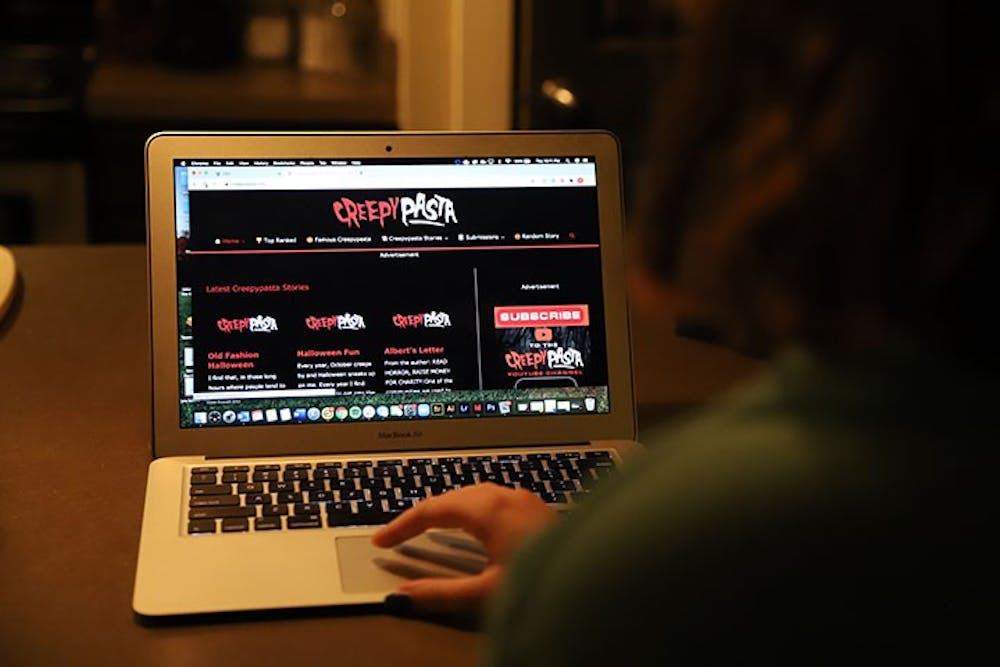Social media allows horror authors to get feedback on their work and lets others share it in a short-form format that brings horror back to its roots as short stories told and retold by audiences.
Horror's humble beginnings in short-form stories spoken around the campfire that play on our deepest collective fears are being kept alive by the internet.
The nature of the beast of modern horror movies is that it has to cause the viewer to feel the most extreme emotions, but it can't interact with the audience until after the movie releases. The power of self-publishing is that the content comes from the audience itself, and the audience decides whether to share the content or not.
Creepypasta, or short creepy stories shared around the internet, emerged around 2007, according to the New York Times. Websites such as Creepypasta.com and social media groups such as Reddit’s r/nosleep are hubs for web-based short story content. Creepypasta videos are gaining traction as well, with YouTube channels such as Crypt TV becoming more popular.
“We’re in this horror renaissance right now," Crypt TV CCO Kate Krantz said in an interview with Collider. "There’s social-first content that’s really prioritizing characters that allow us to talk about issues that otherwise feel taboo."
What really sets creepypasta and other web horror content apart is that in order for it to get anywhere, it has to attract audience attention and do so quickly. If a story is original and gives readers or viewers the thrill they came for, then it can get traction.
USC School of Journalism and Mass Communications assistant professor Linwan Wu said that horror content gets shared not because of the good feelings it gives us, but because of the excitement.
“There are different dimensions of emotions. You have valence, which is negative, positive,” Wu said. “There is another dimension of emotion called arousal. So basically, that’s the level of excitement."
Wu said that according to studies, people tend to share content that has a high arousal even if the valence of the content is negative.
The thing that makes creepypastas more like verbal storytelling is that there are so many different stories, but only the best pieces get remembered and shared. Horror at its finest is cheap and experimental. Not everything will land, but when it does, it can make a big splash.
Creepypasta is an excellent opportunity for young writers to get their work out into the world and get feedback and interaction from audiences across the globe.
Just like most social media content, what each individual user sees is based on an algorithm.
“The algorithms now decide, kind of, what you are going to watch,” Wu said.
The algorithm, in this case, works toward the community's good, promoting stories that have already garnered positive audience reaction so that the best and most recent stories can make it to the front page, attracting new readers.
It’s not all fun jump scares and spooks, though. Having these modern horror stories in written attributable format presents some difficulties foreign to the anonymous storytellers that conceived traditional campfire variety stories. Namely, even though many of these stories are released in a free-to-read or -watch format, some people have taken this as a chance to profit off other people’s work without cutting in the author.
Earlier this year, r/nosleep arranged a weeklong Writer’s Blackout to protest content theft by negligent or malevolent content creators on other platforms. The main point of contention was that some YouTube narrators refused to educate themselves on copyright and continued to publish videos featuring Nosleep stories without asking permission of, crediting or compensating the authors.
By the same token, attribution brings on opportunities, too. Popular writers have had their stories adapted into movies, their novels published and themselves hired to write for TV by getting their work out there on r/nosleep.
Through social media, modern, original horror stories can be shared, continuing the time-honored legacy of storytelling in a digital format in a way that is accessible to wide audiences.

